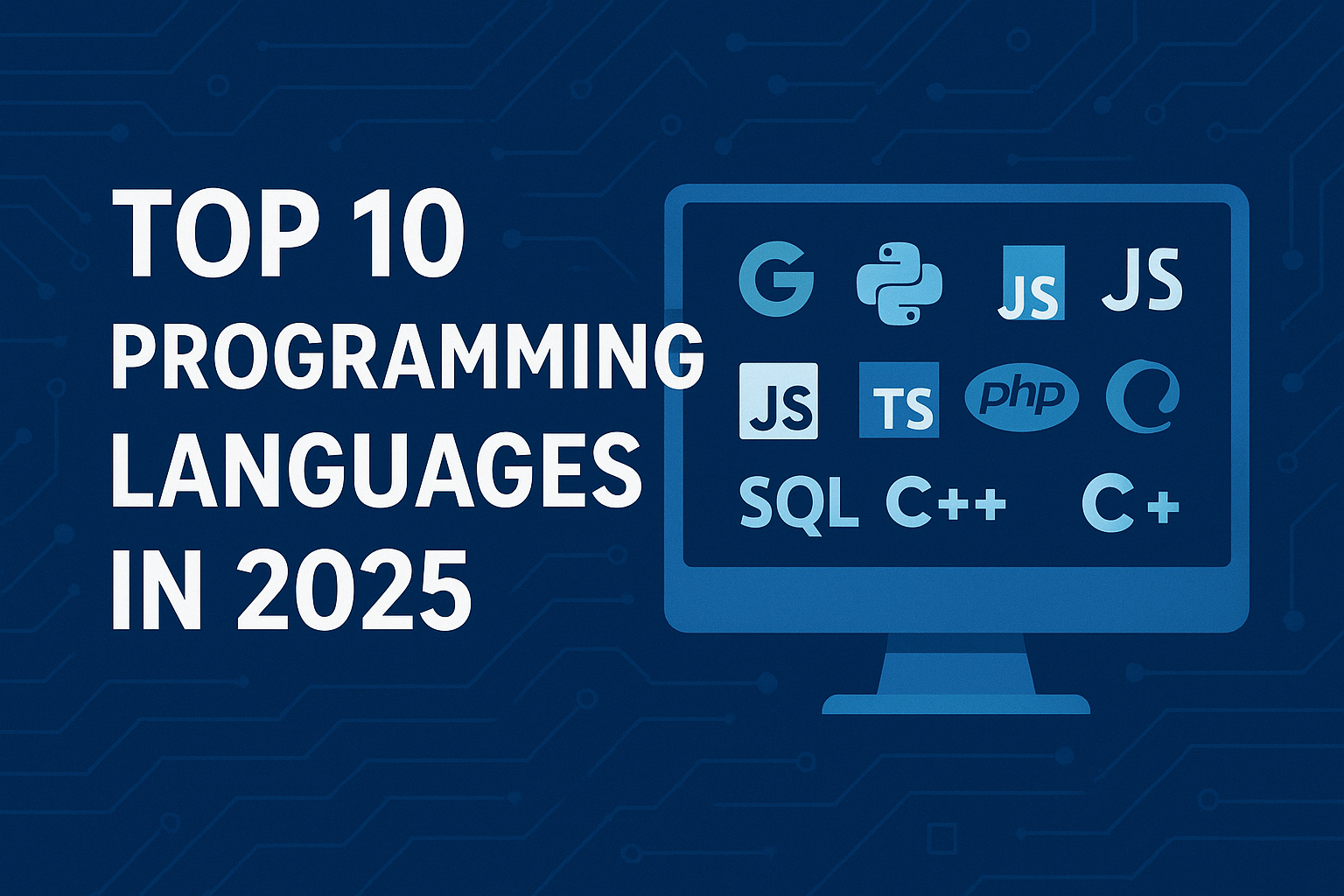Introduction
The world of programming is evolving faster than ever. As new technologies emerge and industries transform, the demand for certain programming languages continues to shift. Whether you’re a beginner, a job-seeker, or a professional developer, staying updated on the most relevant languages is crucial. In this post, we rank the top 10 programming languages in 2025 based on demand, use cases, career prospects, and future relevance.
1. Python
Why it’s at the top: Python continues to dominate thanks to its simplicity, readability, and wide range of applications—from web development to artificial intelligence.
Key Use Cases: AI & Machine Learning, Web Development (Django, Flask), Data Science & Automation, Scripting and DevOps.
Why Learn It: Python is beginner-friendly and heavily used by tech giants like Google and Netflix.
2. JavaScript
Why it’s still essential: JavaScript is the backbone of the web and remains critical for frontend (and even backend) development.
Key Use Cases: Web Development (React, Angular, Vue), Server-side (Node.js), PWAs, Mobile Apps (React Native).
3. Go (Golang)
Why it’s rising: Go is gaining ground due to its performance and use in cloud-native applications.
Key Use Cases: Cloud Computing, Microservices, DevOps Tools like Docker and Kubernetes.
4. Rust
Why it stands out: Rust offers memory safety without garbage collection and is a favorite among developers.
Key Use Cases: Systems Programming, WebAssembly, Embedded Systems, Game Development.
5. TypeScript
Why it’s trending: Adds type safety to JavaScript, making it more robust for large-scale apps.
Key Use Cases: Frontend/Full-Stack Development, Enterprise Apps.
6. Java
Why it remains strong: Java is used across enterprise apps and Android development.
Key Use Cases: Android, Backend, Enterprise Software, Banking Systems.
7. Kotlin
Why it’s relevant: Official Android language, cleaner than Java.
Key Use Cases: Android, Backend (Ktor), Web Development.
8. Swift
Why it’s a must: Swift is essential for iOS/macOS development.
Key Use Cases: iOS, Apple Watch/TV Apps.
9. SQL
Why it’s evergreen: SQL powers database queries and analysis.
Key Use Cases: Database Management, Analytics, Business Intelligence.
10. C#
Why it’s thriving: C# remains popular for Microsoft apps and game development (Unity).
Key Use Cases: Desktop Apps, Game Development, .NET Web Apps.
Bonus Mentions:
Ruby (web startups), PHP (legacy websites), Dart (Flutter apps), R (research and stats).
Conclusion
The programming landscape in 2025 favors flexibility, performance, and developer experience. Whether you’re diving into AI with Python, building web interfaces with JavaScript, or writing safe, high-performance code with Rust—choose the language that best fits your goals and start building.
